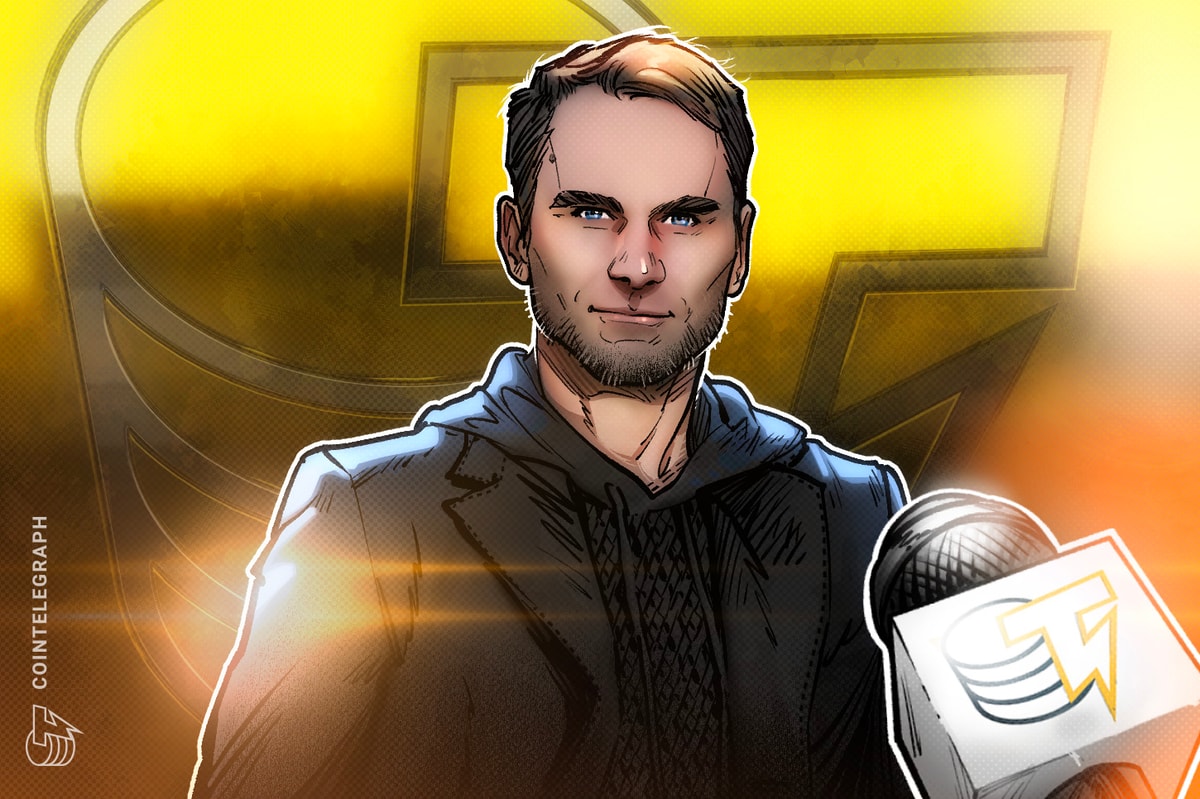Paolo Ardoino became CEO of Tether on Dec. 1, moving up from the position of chief technology officer, which he had held since 2017. His appointment was planned well in advance and comes as the company is prioritizing diversification and expansion.
It’s a good time for the company. Tether is on track to make $4.5 billion in profits with its main business this year, Ardoino said. He spoke to Cointelegraph about changes coming up in the company’s product line and its overall orientation.
“As we are going to show in the next quarter, Tether is much more than USDT (USDT),” Ardoino said. For one thing, Tether will increasingly become an infrastructure provider. Ardoino likes “the premise of Web3,” he said, but he was less pleased with its implementation, calling it a bubble:
“There is some talk about real-world assets, but what I think is more important is a real-world ecosystem.”
Innovations coming from the crypto world “should almost be masked” from the public, which cares about what technology does, not how it works, Ardoino said. He was particularly enthusiastic about the communications app Keet and its platform Holepunch, where he is chief strategy officer.
WhatsApp is down globally.https://t.co/uaVXfClZVr doesn’t have servers. All connections happen directly between peer devices. Full privacy.
In fact the biggest lie is that people need cloud/centralized infrastructure to talk to friends and family.
Be a https://t.co/4Wexvzjy95
— Paolo Ardoino (@paoloardoino) October 25, 2022
Holepunch is decentralized, but isn’t a blockchain. It took its inspiration from BitTorrent, Ardoino said. Keet enables users to find each other and connect through their IP addresses for real-time communications.
Keet, which debuted last year, costs nothing to use or to provide. It also produces no revenue, but Ardoino sees an upside in the long term:
“We believe Keet will be one of the biggest drivers of Bitcoin and USDT adoption in the world.”
Ardoino said there are 20 developers working on Keet — a small outlay for a company of Tether’s size.
Keet’s value proposition is grounded in technology and philosophy. “Maybe, if society were perfect, nobody would need Keet,” Ardoino said. “But the world is not going toward happiness, the way I see it, and I think something like Keet would be helpful.”
That is because Keet reduces the need for data centers, hardware, cables and energy worldwide. It is also impervious to censorship. Apps such as WhatsApp, Skype and Telegram can be blocked because they have centralized servers, but anyone with an internet connection can use Keet at any time.
Related: Tether issues $610M debt financing to Bitcoin miner Northern Data
“We are not activists at our core,” Ardoino said. Nonetheless, Tether’s devotion to Bitcoin (BTC) is also based on principle. “We love Bitcoin and we believe it is important […] That it fights back against accusations it is wasting energy,” he said. Bitcoin is resistant to inflation, political upheaval and more:
“Bitcoin is something that will resist the wrath of God.”
As with Keet, Tether found a way to make principles and business align in Bitcoin mining, which Tether is expanding into in a big way. Investing in renewable energy makes sense, Ardoino argued, as the infrastructure for electricity generation from fossil fuel is prohibitively expensive and its cost is therefore unpredictable.
Tether will be constructing hydropower facilities in Uruguay and geothermal facilities in El Salvador. Geothermal power sources take longer to build, Ardoino said, but they have a service life of over half a century, which is twice that of wind and solar generators.
Magazine: How to protect your crypto in a volatile market: Bitcoin OGs and experts weigh in
Source: https://cointelegraph.com/news/tether-infrastructure-energy-production-ceo-ardoino-says




